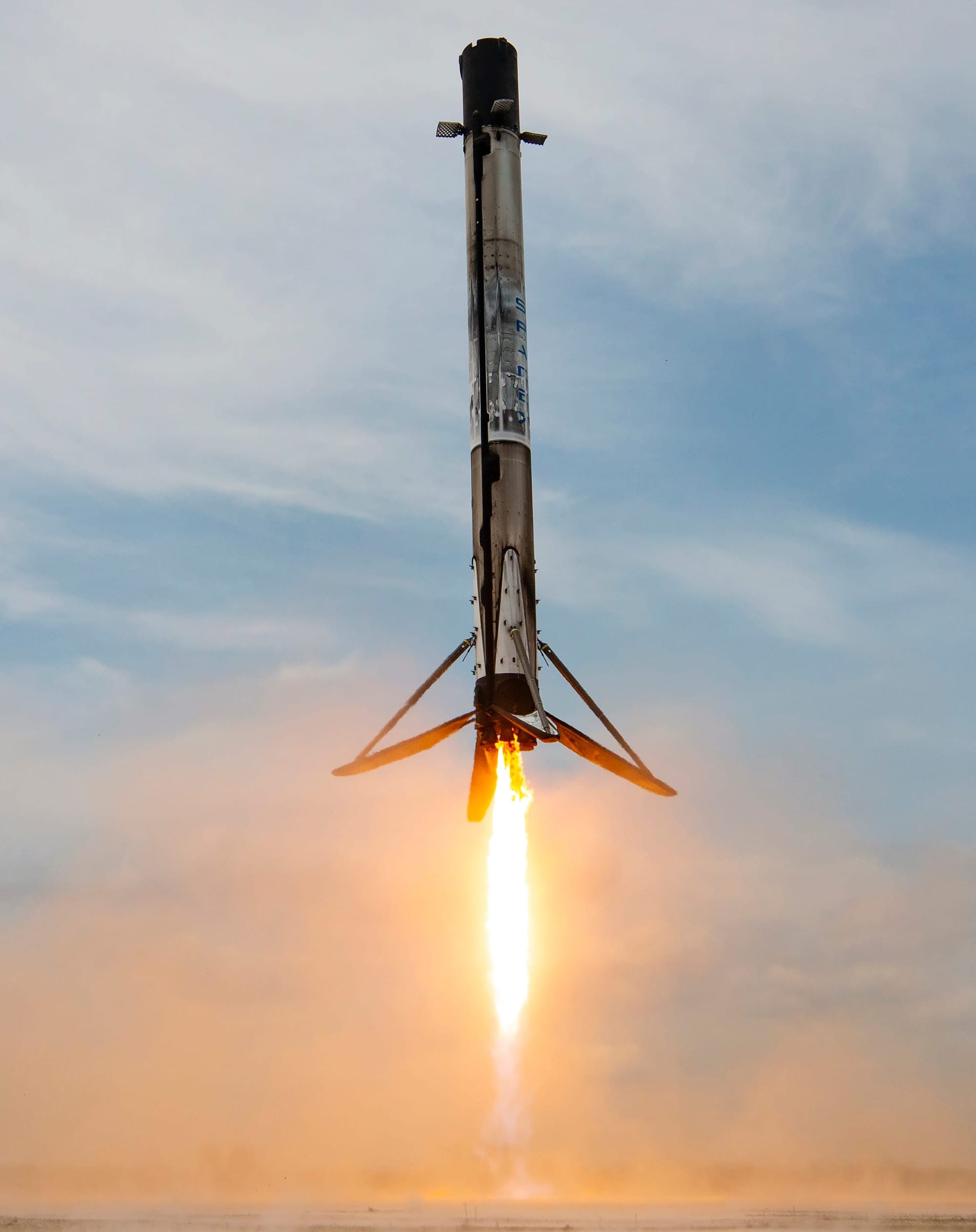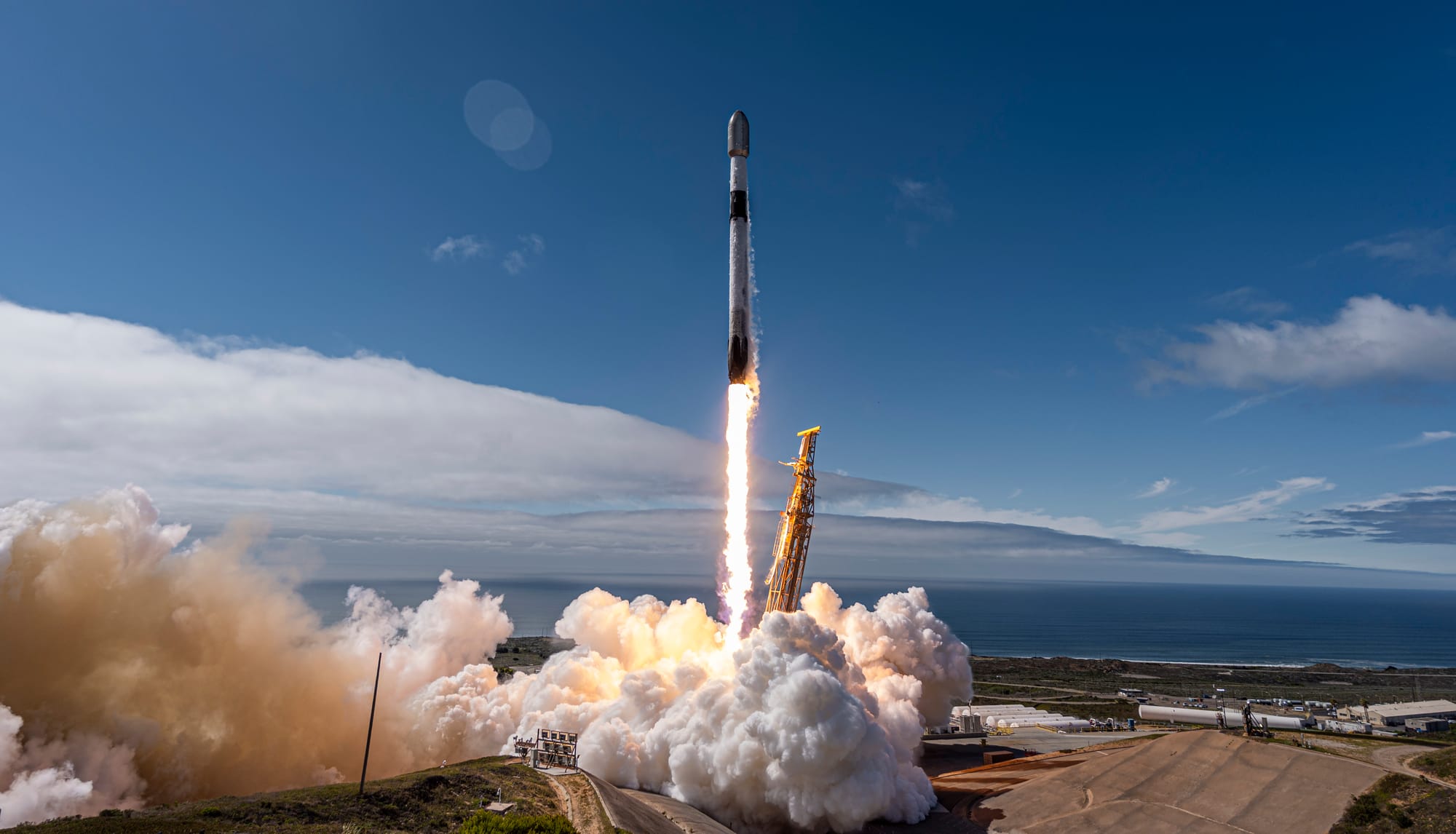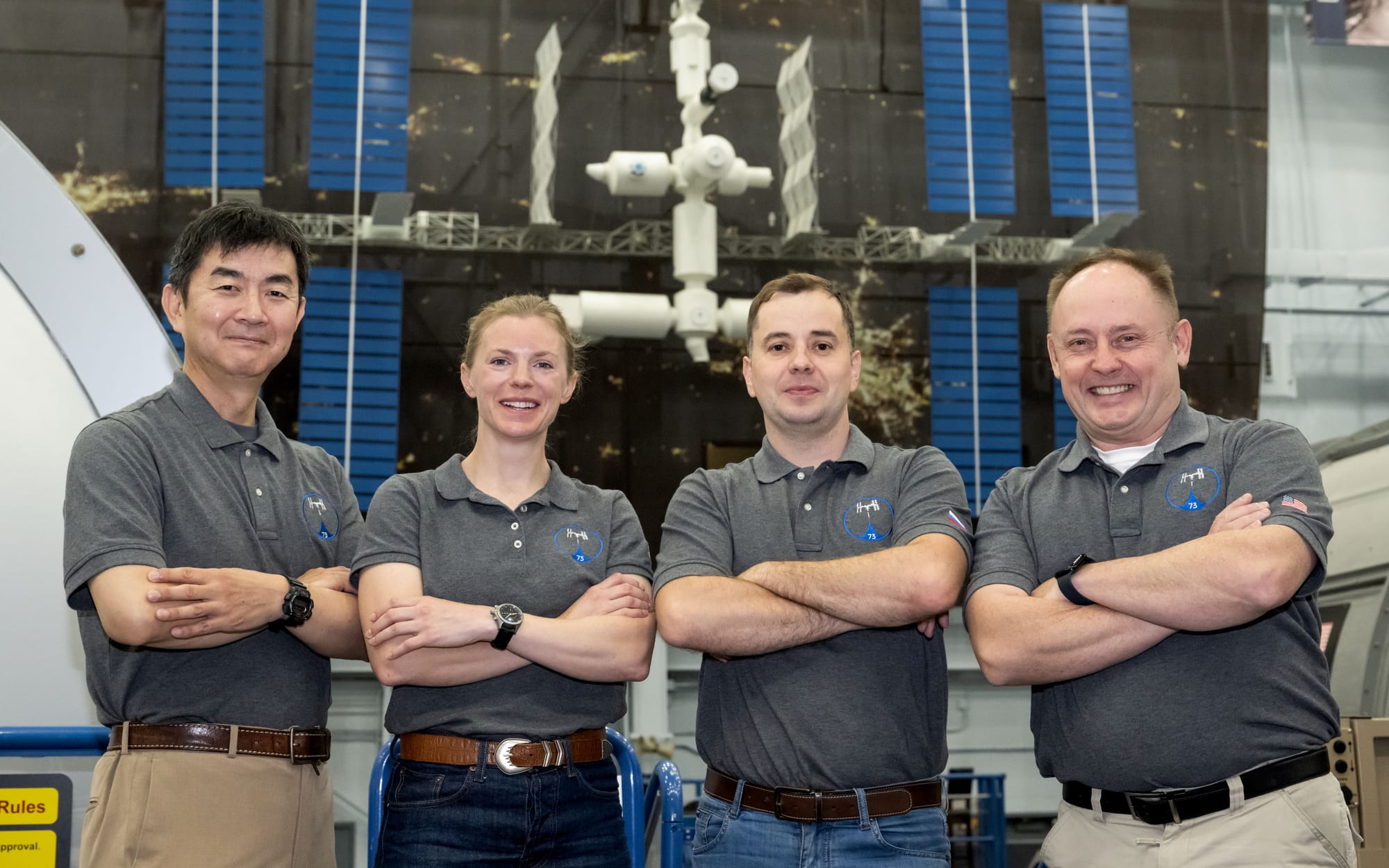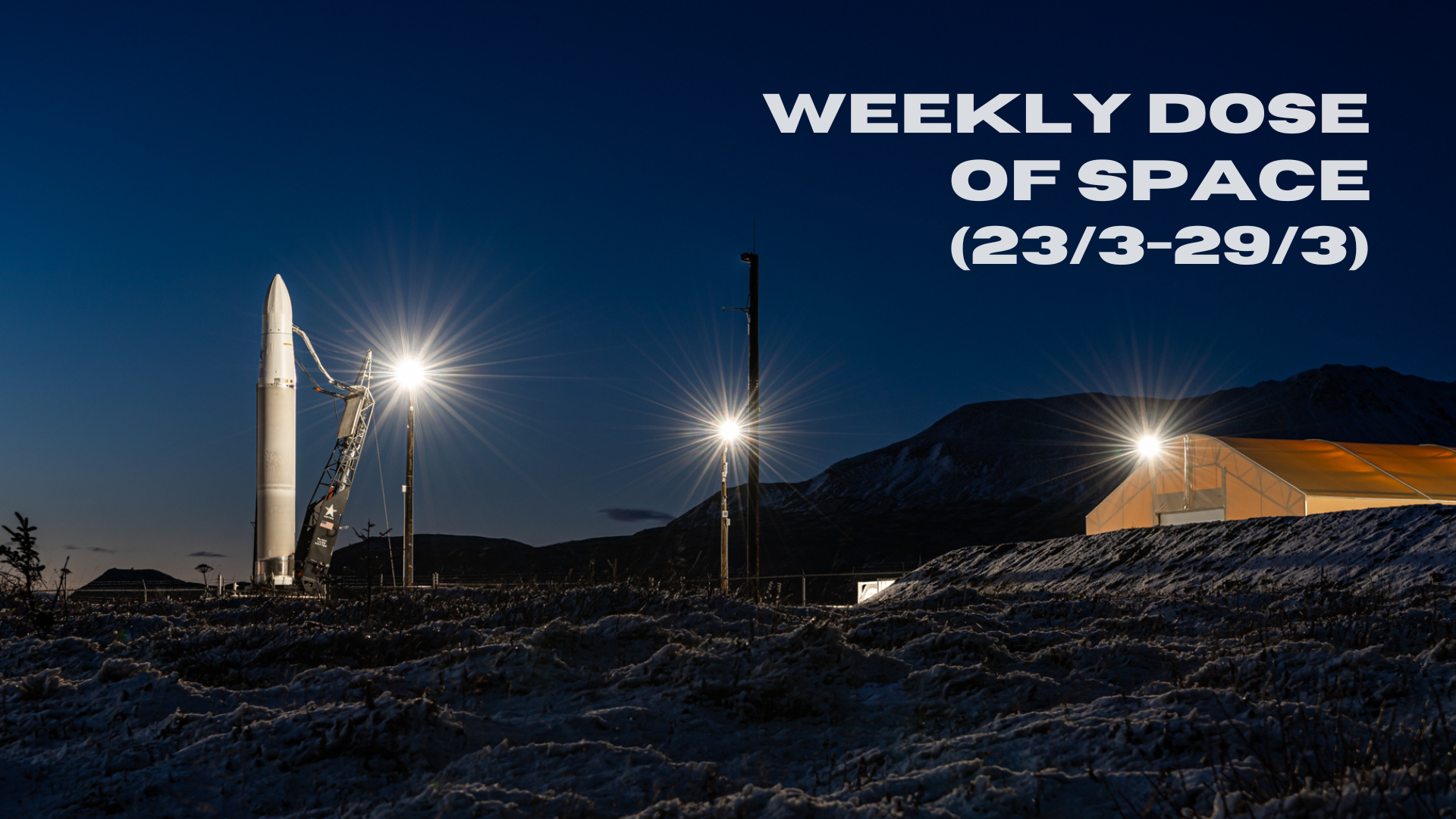Table of Contents
Welcome back to Weekly Dose of Space! This week saw five launches taking place, with at least three of them being dedicated to communications services. News from the week had NASA assigning its Crew-11 astronauts and the USSF preparing to book flights on more varied rockets. As always, we'll also look ahead to what the worldwide launch schedule might look like next week.
Launches This Week
March 24th - Falcon 9 with NROL-69
A Falcon 9 lifted off from Space Launch Complex 40, in Florida, carrying a military satellite into Earth orbit for the U.S. National Reconnaissance Office. The booster supporting this mission was B1092, making its second flight and landing back at Landing Zone 1 in Cape Canaveral.

March 26th - Electron for 'Finding Hot Wildfires Near You'
Rocket Lab launched its Electron rocket from Launch Complex 1B, located on the Māhia Peninsula in New Zealand, carrying eight satellites to low Earth orbit for Orora Technologies. The eight satellites will monitor wildfires worldwide via the use of infrared cameras.
Nice liftoff in the dark today! pic.twitter.com/rIaMaQPWYR
— Peter Beck (@Peter_J_Beck) March 27, 2025
Electron lifting off from Launch Complex 1B, via Peter Beck on Twitter.
March 26th - Long March 3B/E with Tianlian-2-04
A Long March 3B/E blasted off from Launch Complex 2 at the Xichang Satellite Launch Center heading to geostationary transfer orbit carrying Tialian-2-04. Tianlian-2-04 is a relay satellite used to fill in communications dead zones for the Tiangong Space Station and Shenzhou spacecraft.

March 26th - Falcon 9 with Starlink Group 11-7
Twenty-seven Starlink satellites were delivered to low Earth orbit atop of a Falcon 9 flying from Space Launch Complex 4E, in California. Booster B1063 supported this launch for its twenty-fourth flight, with a landing downrange on the drone ship 'Of Course I Still Love You'.

March 29th - Long March 7A with TJSW-16
The TJSW-16 communications technology verification satellite was delivered to a geostationary transfer orbit by a Long March 7A flying from Launch Complex 201 at the Wenchang Space Launch Site. TJSW-16 will reportedly provide communications services, radio, television, and data transmission, as well as testing and verification for multi-band high-speed throughput communications technologies.

In Other Space News
NASA assigns Crew-11 astronauts

NASA announced on March 27th, the crew assigned aboard the Crew-11 mission, set to launch in July.
The astronauts assigned to Crew-11 are NASA's Zena Cardman as mission Commander and Mike Fincke as the spacecraft Pilot, Mission Specialists onboard are JAXA's Kimiya Yui as well as Roscosmos' Oleg Platonov. Cardman and Platonov will be heading to space for the first time for Crew-11, with Yui heading to orbit for the second time while Fincke will be making his fourth spaceflight.
Crew-11 is set to be the eleventh operational NASA Commercial Crew Program mission to take place, and the thirteenth carrying humans.
USSF greenlights Vulcan, on-ramps new rockets
The U.S. Space Force’s Space Systems Command (USSFSSC) announced on March 26th that United Launch Alliance's (ULA) Vulcan rocket has been certified to perform National Security Space Launch (NSSL) missions. Speaking on the certification, ULA Chief Executive Officer Tory Bruno commented:
“We are proud to have launched 100 national security space missions and honored to continue serving the nation with our new Vulcan rocket,” – “We thank the Space Force for their collaboration and confidence, and we are honored to support our national security needs for many years to come.”
Vulcan's certification was delayed several months due to an anomaly during the rocket's second flight. The rocket currently has two U.S. national security missions being prepared, USSF-87 and USSF-106, with Brigadier General Kristin Panzenhagen, Program Executive Officer for Assured Access to Space, adding:
“Assured access to space is a core function of the Space Force and a critical element of national security,” – “Vulcan certification adds launch capacity, resiliency, and flexibility needed by our nation’s most critical space-based systems.”
In additional support of assured space access, the USSF on-ramped Rocket Lab's Neutron and Stoke Space's Nova, both reusable rockets, onto their Phase 3 Lane 1 contract on March 27th. Phase 3 Lane 1 missions are intended to bring more competition to national security launches.
Neither Neutron nor Nova have flown their debut missions yet, but the USSF is awarding both companies five million United States Dollars for a Firm Fixed-Price Task Order to conduct an initial capabilities assessment. After either of the rockets flies a successful mission, they will be eligible to fly national security missions.
What to Expect Next Week
March 30th - Spectrum for it's debut flight
Isar Aerospace is preparing to perform the debut mission of its Spectrum rocket from Norway's Andøya Spaceport, carrying no payloads.
March 30th - Firefly Alpha for 'Message in a Booster'
Firefly Aerospace is preparing to launch its Alpha rocket from Space Launch Complex 2W, in California, carrying a test satellite for Lockheed Martin.
March 30th - Falcon 9 with Starlink Group 6-80
SpaceX is planning to launch a batch of Starlink satellites to low Earth orbit atop of a Falcon 9 flying from Space Launch Complex 40.
April 1st - Falcon 9 with Starlink Group 11-13
Another batch of Starlink satellites is planned to be launched from Space Launch Complex 4E to low Earth orbit atop of a Falcon 9.
April 1st - Falcon 9 for Fram2
A Crew Dragon is expected to launch atop a Falcon 9 to polar orbit from Launch Complex 39A. Four astronauts are planned to be on board and are: Chun Wang from Malta, Jannicke Mikkelsen from Norway, Rabea Rogge from Germany, and Eric Philips from Australia.
April 1st - Long March 2D with a to-be-announced payload
A Long March 2D may fly from the Jiuquan Satellite Launch Center to low Earth orbit carrying a currently unknown payload.
April 3rd - Long March 6 with a to-be-announced payload
A Long March 6 is expected to fly from the Taiyuan Satellite Launch Center to low Earth orbit, carrying an unknown payload. Rumors around the launch claim this could be the Long March 6's final flight.







